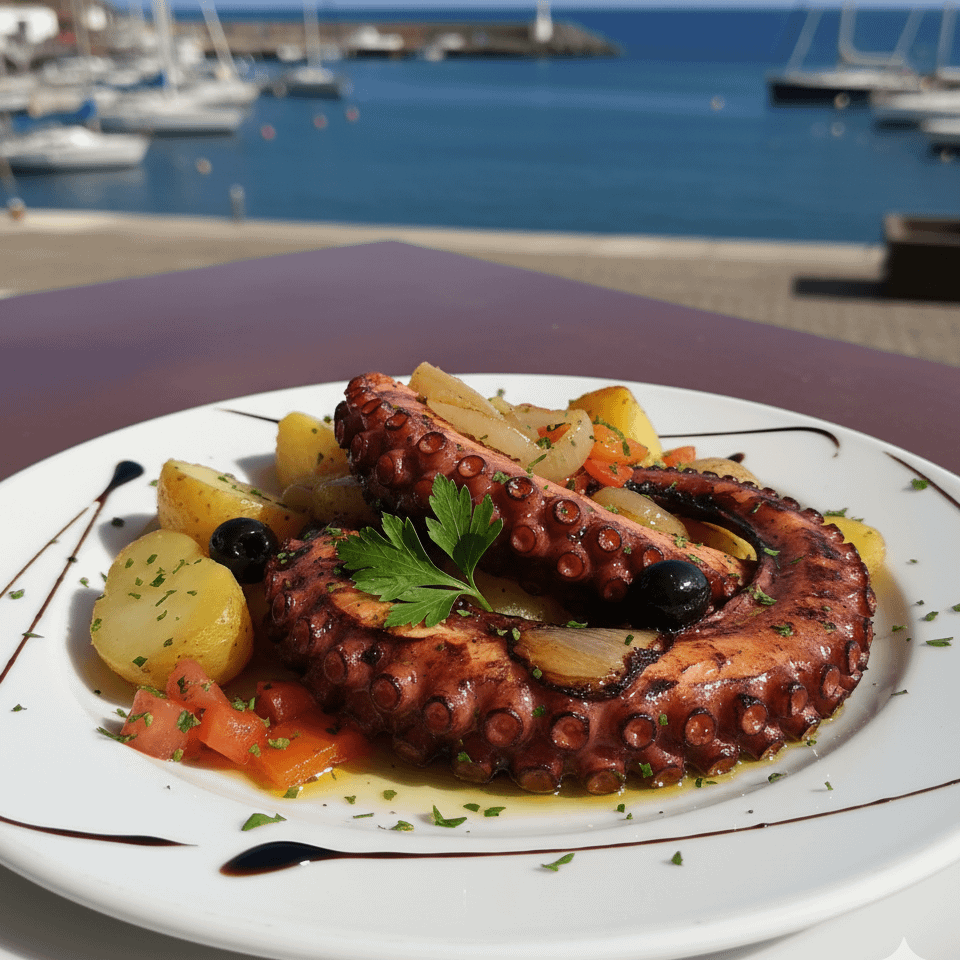A Taste of Madeira
A guide to the top 10 traditional dishes and drinks from the ‘Pearl of the Atlantic.’ Explore the island’s unique flavors rooted in its volcanic soil and abundant sea life.
- All
- Meat
- Seafood
- Starters & Sides
- Drinks
- Sweets
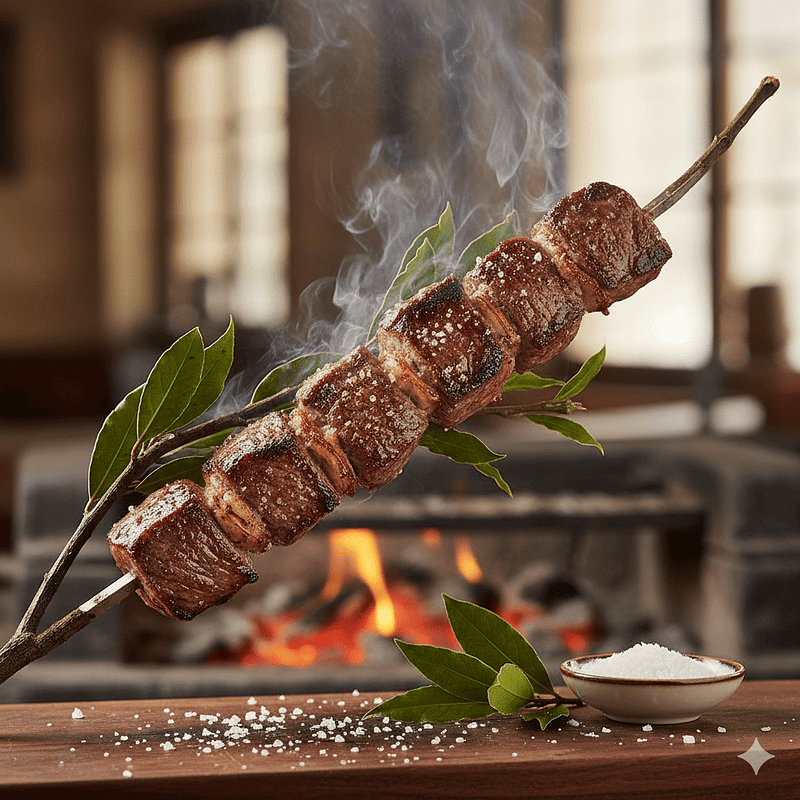
1. Espetada Madeirense
Beef Skewer on Bay Laurel Stick
The Dish
Tender cubes of prime beef are generously seasoned with sea salt and garlic. Crucially, they are skewered onto a long *bay laurel stick* (or metal skewer, traditionally laurel) and grilled over hot coals or wood fire.
Cultural Background
Traditionally, espetada was a dish reserved for religious festivals, pilgrimages, and family gatherings, reflecting the value of beef. The use of the bay laurel branch infuses the meat with a smoky, aromatic flavor that defines the dish.
Where to Taste It
Look for specialized meat restaurants or *churrascarias*, especially in the town of Estreito de Câmara de Lobos, known as a hub for the best espetada.
Want to try espetada without leaving Calheta?
At Marina Azul, we serve this Madeiran classic fresh off the grill, just steps from the marina.
Book a Table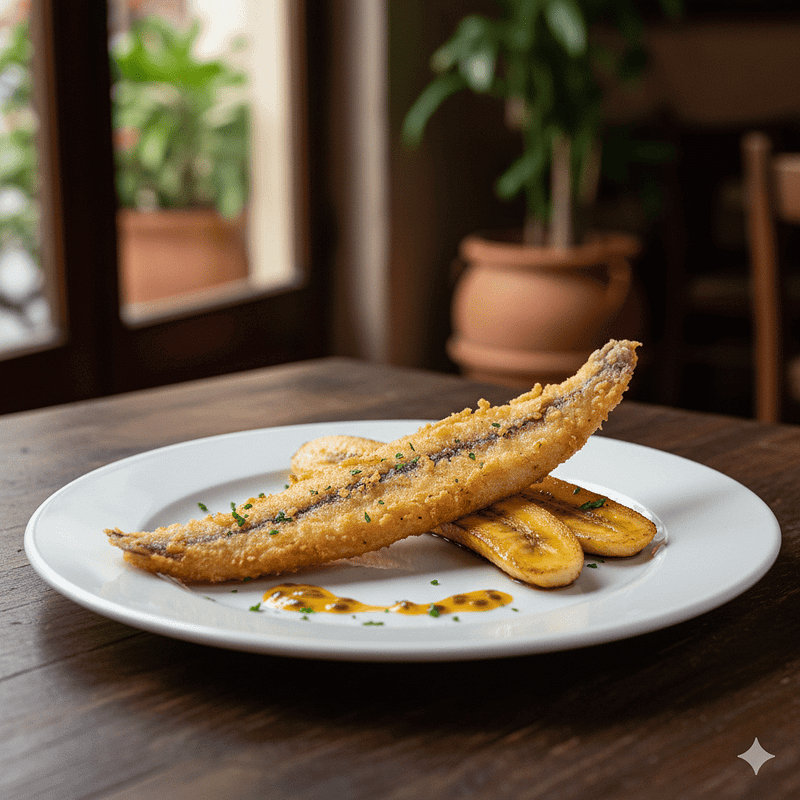
2. Peixe Espada com Banana
Black Scabbardfish with Banana
The Dish
The black scabbardfish is prized for its soft, flaky, bright-white flesh. The fillet is usually seasoned, lightly battered, and fried, then served alongside locally grown, fried banana.
Cultural Background
The pairing of fish with fruit reflects the island’s location and climate, which support both deep-sea fishing and tropical agriculture. It’s a bold combination that surprisingly works perfectly, the sweetness of the banana balancing the delicate fish.
Where to Taste It
As a true island specialty, you’ll find it in almost any high-quality restaurant, particularly those in Funchal’s Zona Velha (Old Town) or along the coastal towns where fish is fresh.
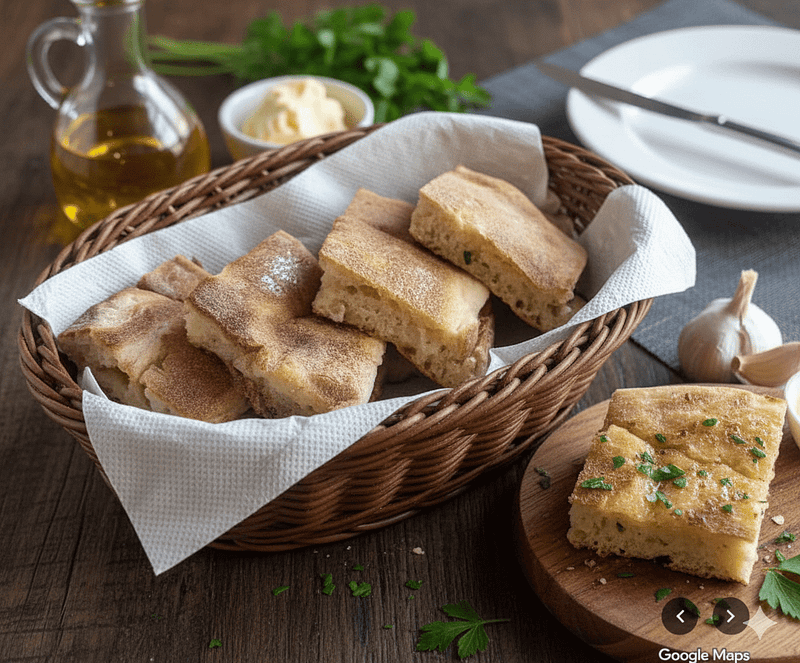
3. Bolo do Caco
Garlic Bread
The Dish
A flat, circular bread made from wheat flour and sometimes sweet potato, traditionally baked on a hot basalt stone slab called a *caco*. It is characteristically soft, slightly dense, and chewy.
Cultural Background
Originating in neighboring Porto Santo, the bread was initially made to use up leftover dough. Since it required only hot stones and not an oven, it became a staple of the common people. It is nearly always served hot, smothered in melting garlic butter and parsley.
Where to Taste It
Everywhere! You can grab it plain or as the vehicle for a sandwich (like a *Prego no Bolo do Caco*—steak sandwich) at street vendors, snack bars, and every major restaurant across the island.
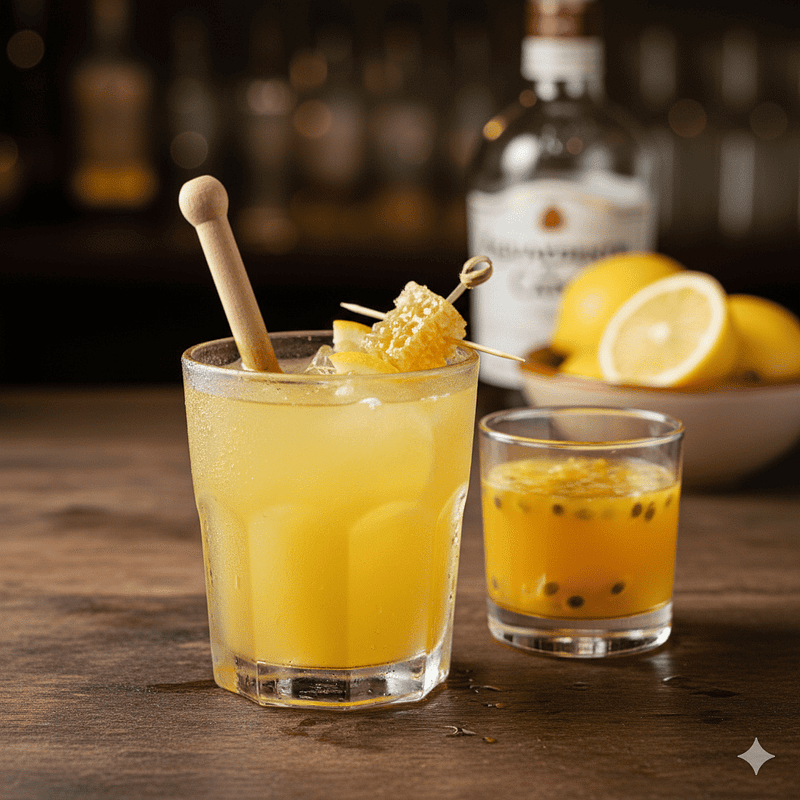
4. Poncha
The Island's Signature Cocktail
The Dish
It’s a mix of **Aguardente de Cana** (sugarcane spirit, similar to rum), honey (or sugar), and lemon juice. Modern variations include passion fruit (*maracujá*) or tangerine.
Cultural Background
Legend says Poncha was invented in the 18th century by fishermen in Câmara de Lobos, who believed the mix of citrus (Vitamin C) and alcohol was the perfect remedy for the common cold and to ward off scurvy at sea. It is traditionally made using a wooden tool called the *mexelhote*.
Where to Taste It
Head to the authentic, small *tascas* (taverns). The village of Serra de Água is famous for its classic version, but you’ll find fantastic, freshly made Poncha in Funchal’s city center bars as well.
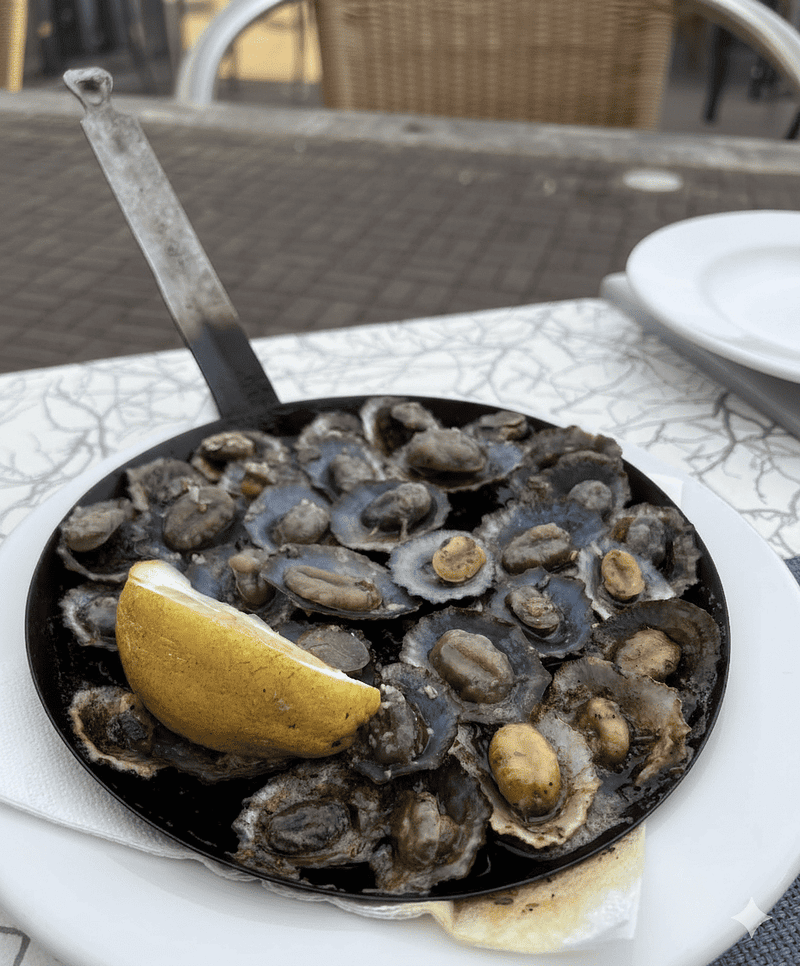
5. Lapas Grelhadas
Grilled Limpets
The Dish
Limpets (a type of edible sea snail) are grilled quickly in their shells until they bubble. They are served sizzling hot, often dressed simply with garlic butter and a squeeze of fresh lemon.
Cultural Background
Being a volcanic island, Madeira has an abundance of shellfish found clinging to its rocky shores. Lapas represent the simplicity and freshness of the Atlantic diet.
Where to Taste It
Any restaurant right on the waterfront, such as those in Câmara de Lobos, Machico, or Jardim do Mar. They are best enjoyed as an appetizer with a glass of local white wine.
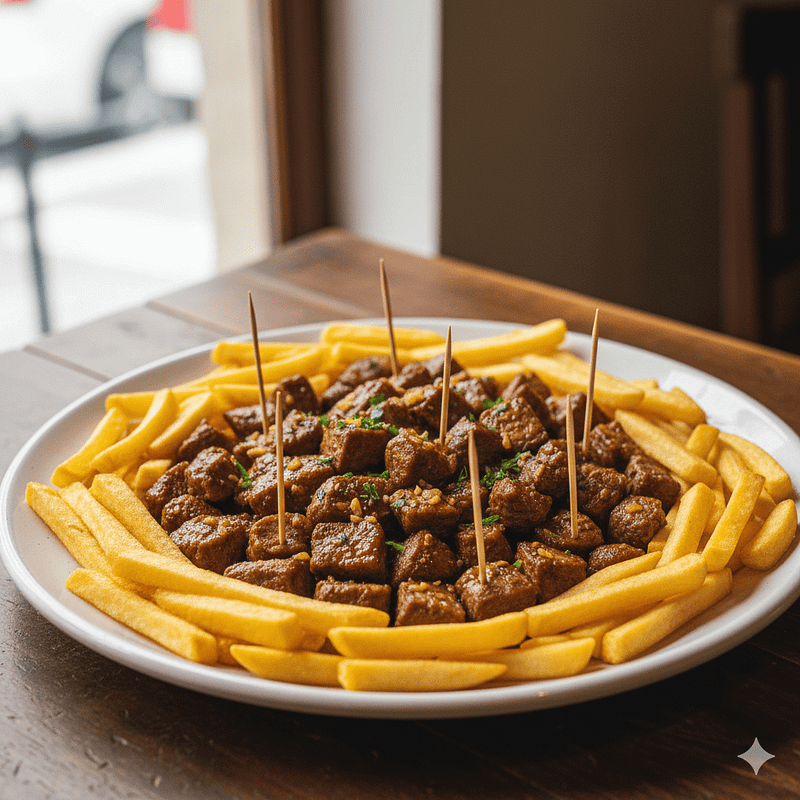
6. Picado Regional
Shared Meat Platter
The Dish
Small cubes of beef (though sometimes veal, octopus, or squid) are fried in a garlic-rich sauce, seasoned with pepper, and served on a large platter surrounded by French fries.
Cultural Background
The custom is for everyone at the table to share the dish, eating directly from the platter using a toothpick or fork. This communal style emphasizes local hospitality and gathering.
Where to Taste It
Found in almost all regional restaurants and snack bars (*cafés*) across the island, from town centers to mountain villages. It’s ideal for a relaxed lunch or an evening spent socializing.
EXCELLENTTrustindex verifies that the original source of the review is Google. Nosso filho Tiago adoro a simpatia de uma senhora e claro do resto do pessoal. Atendimento ao top, comida com uma escolha muito variada. Hoje foi sardinha, cordon bleu(nossos filhos adoraram), filet na pedra e uma salade césar. Sitio agradavel. Adoramos e aconselhamosPosted onTrustindex verifies that the original source of the review is Google. Um jantar em familia com uma comida deliciosa. Pessoas muito sympaticas no servico.Posted onTrustindex verifies that the original source of the review is Google. Super, leckeres und frisches Essen, top Service, wirklich ein perfekter Abend. Wir kommen wieder!Posted onTrustindex verifies that the original source of the review is Google. Tunfisch mit Beilagen war super lecker. Nudeln würde ich nicht bestellen, da zu weich gekocht. Sehr aufmerksamer Service, schnelle Zubereitung, insgesamt sehr gut!Posted onTrustindex verifies that the original source of the review is Google. Excellent food! Friendly and helpful peoplePosted onTrustindex verifies that the original source of the review is Google. Great location, food is so good and the staff very attentive ..... lovely place, highly recommended.Posted onTrustindex verifies that the original source of the review is Google. This is a fantastic restaurant, an absolute gem. Fantastic food great service, brilliant location. Don’t miss itPosted onTrustindex verifies that the original source of the review is Google. HIGHLY RECOMMENDED!!! One of the best fish dishes I’ve ever eaten! Scabbard fish (espada) with passion fruit sauce and banana. Surprisingly delicious combination of flavours. Sweet potato’s as a side compliments well. Garlic bread (bolo do caco) - local special - exceptionally good here. Highly recommended as a starter. Also great, fresh fruits juices. Prices are amazing for the size and quality of meals (we spend 87 Euro together fot 3 of us). And last but not least - amazing service, friendly, great atmosphere. Total rate 11/10Posted onTrustindex verifies that the original source of the review is Google. Fantastic food with amazing service.Posted onTrustindex verifies that the original source of the review is Google. Tried fish of the day, really fresh and perfectly made. Totally recommendVerified by TrustindexTrustindex verified badge is the Universal Symbol of Trust. Only the greatest companies can get the verified badge who has a review score above 4.5, based on customer reviews over the past 12 months. Read more
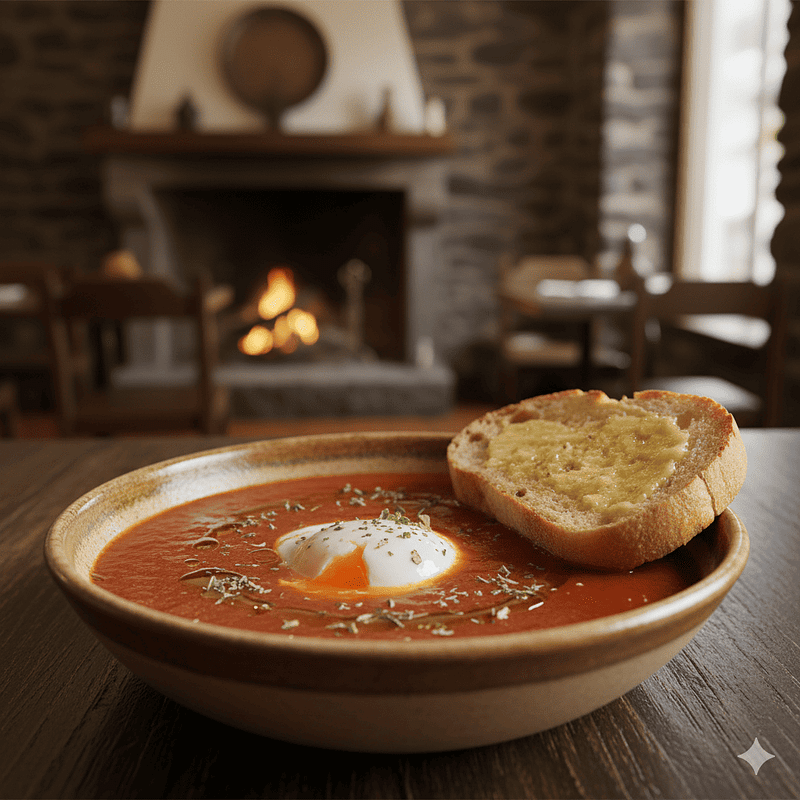
7. Sopa de Tomate e Cebola
Tomato and Onion Soup
The Dish
A rich, velvety soup made from reduced ripe tomatoes and onions, often flavored with garlic and oregano. It is traditionally served with a **poached egg** submerged in the hot broth and a slice of bread.
Cultural Background
Like many rural Portuguese dishes, this soup is hearty, economical, and based on simple, readily available garden ingredients. The poached egg adds protein and richness.
Where to Taste It
Look for it in traditional, family-run *tascas* and taverns in the smaller villages, or as a warming starter in Funchal’s traditional lunch spots.
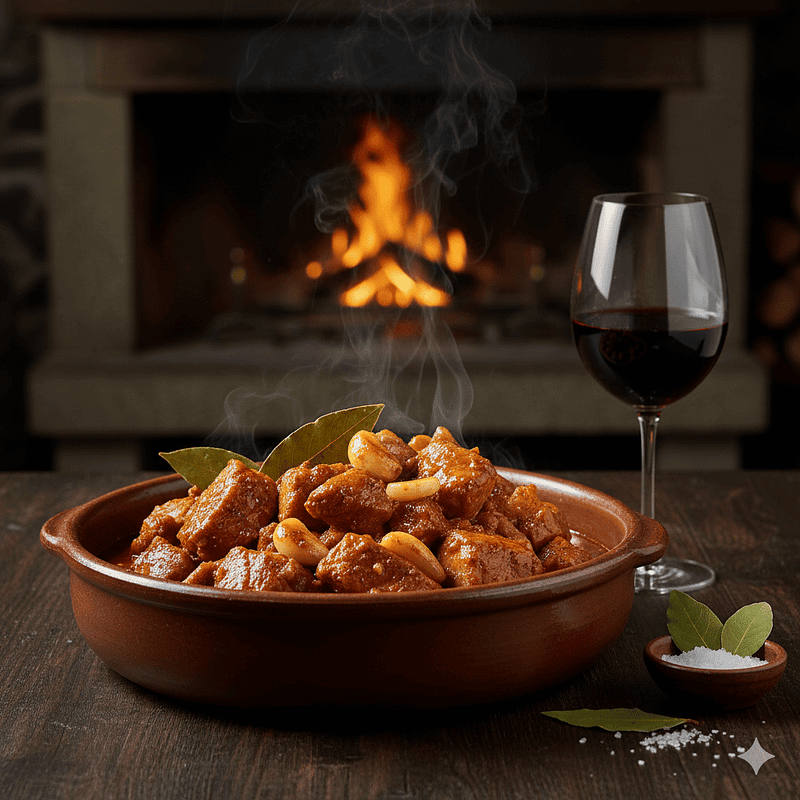
8. Carne Vinha d'Alhos
Wine and Garlic Pork
The Dish
Pieces of pork are marinated for at least a day (often longer) in a mixture of white wine, vinegar, garlic, bay leaves, and paprika, then cooked slowly in the marinade itself.
Where to Taste It
Often featured on winter menus or available in restaurants that specialize in regional Portuguese cuisine. It pairs exceptionally well with a glass of full-bodied Madeira wine.
Where to Taste It
As a true island specialty, you’ll find it in almost any high-quality restaurant, particularly those in Funchal’s Zona Velha (Old Town) or along the coastal towns where fish is fresh.
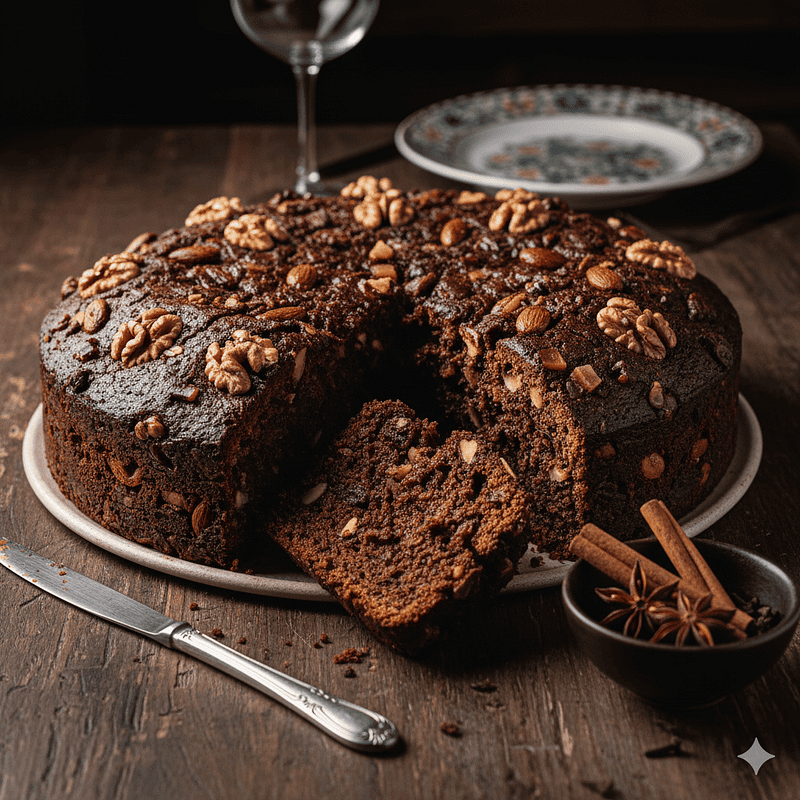
9. Bolo de Mel de Cana
Sugarcane Honey Cake
The Dish
This cake is made with *mel de cana* (sugarcane molasses or honey), not bee honey. It is packed with spices (cinnamon, cloves), nuts, and dried fruit, and has a hard, sticky texture, traditionally meant to be broken by hand, not cut with a knife.
Cultural Background
The cake originated from the sugarcane industry, which was Madeira’s first economic boom. Its dense composition meant it could be stored for months or even years, making it an ideal gift for sailors. It’s now associated strongly with Christmas but available year-round.
Where to Taste It
Purchased pre-made from specialized traditional bakeries (*pastelarias*) like the famous Fábrica de Santo António, or in most local shops and markets throughout Funchal.
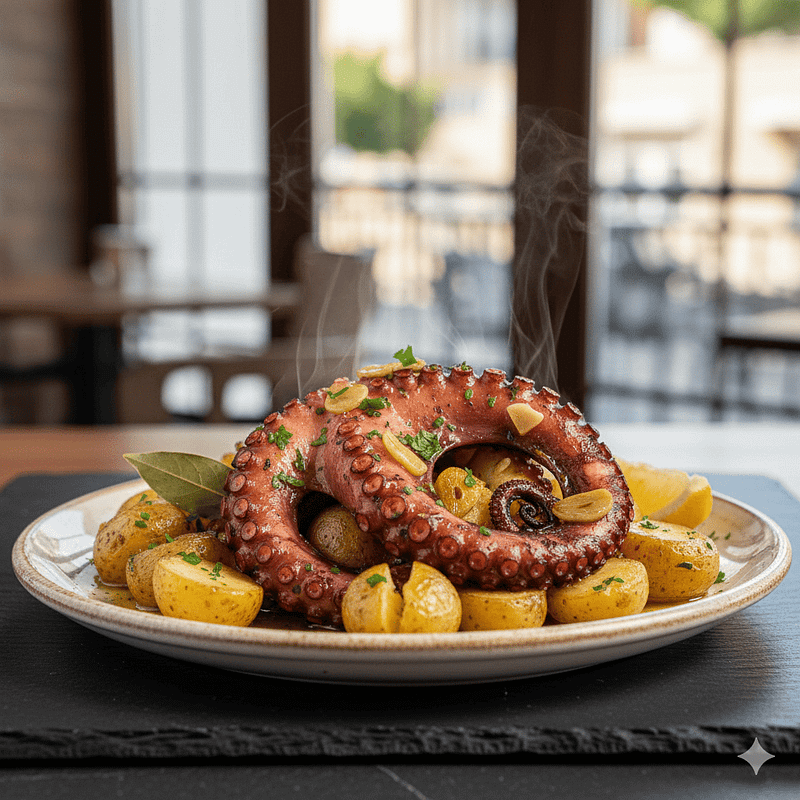
10. Polvo à Lagareiro
Octopus in Olive Oil
The Dish
The octopus is first boiled until perfectly tender, then generously bathed in high-quality olive oil and garlic. It is roasted or grilled until the tentacles are slightly crispy, often served with small potatoes that are “punched” open to absorb the oil.
Cultural Background
The term *Lagareiro* refers to the owner of an olive oil press, signifying the dish’s foundation in copious amounts of good olive oil. It’s a celebration of the Atlantic’s bounty
Where to Taste It
Find this dish in premium seafood restaurants, especially in Funchal and Calheta, where the chefs can ensure the octopus is fresh and cooked to tender perfection.
Your Culinary Adventure Starts Here
Madeiran cuisine offers a depth of flavor and tradition as impressive as the island’s peaks and valleys. From the communal joy of Picado to the powerful kick of Poncha, tasting these dishes provides a genuine insight into the heart and soul of the archipelago.
Ready to explore these incredible flavors in a stunning coastal setting?
At Marina Azul in Calheta, we prepare these Madeiran specialties with a fresh coastal touch. We honor the tradition of espetada and the delicacy of the local fish, while offering a refined dining experience.










